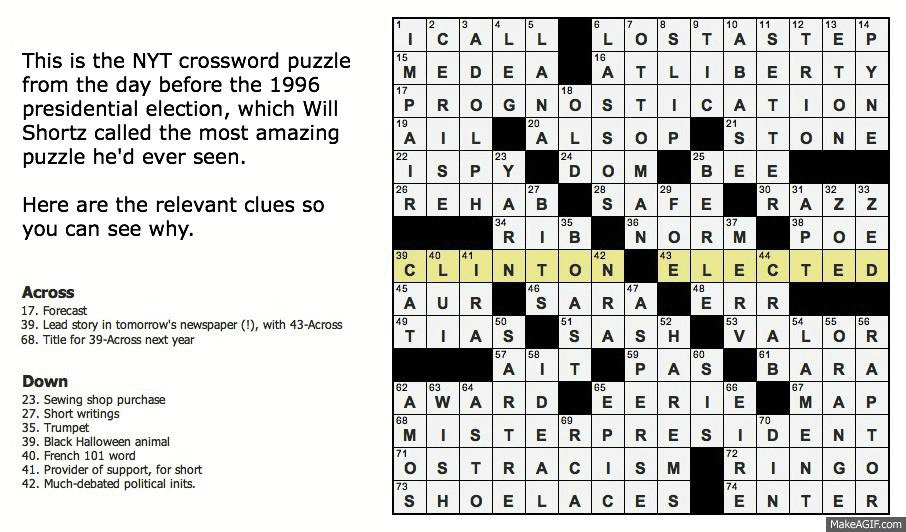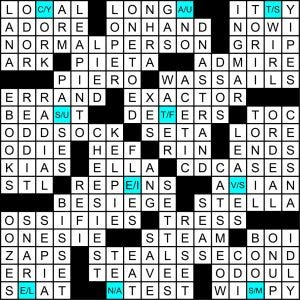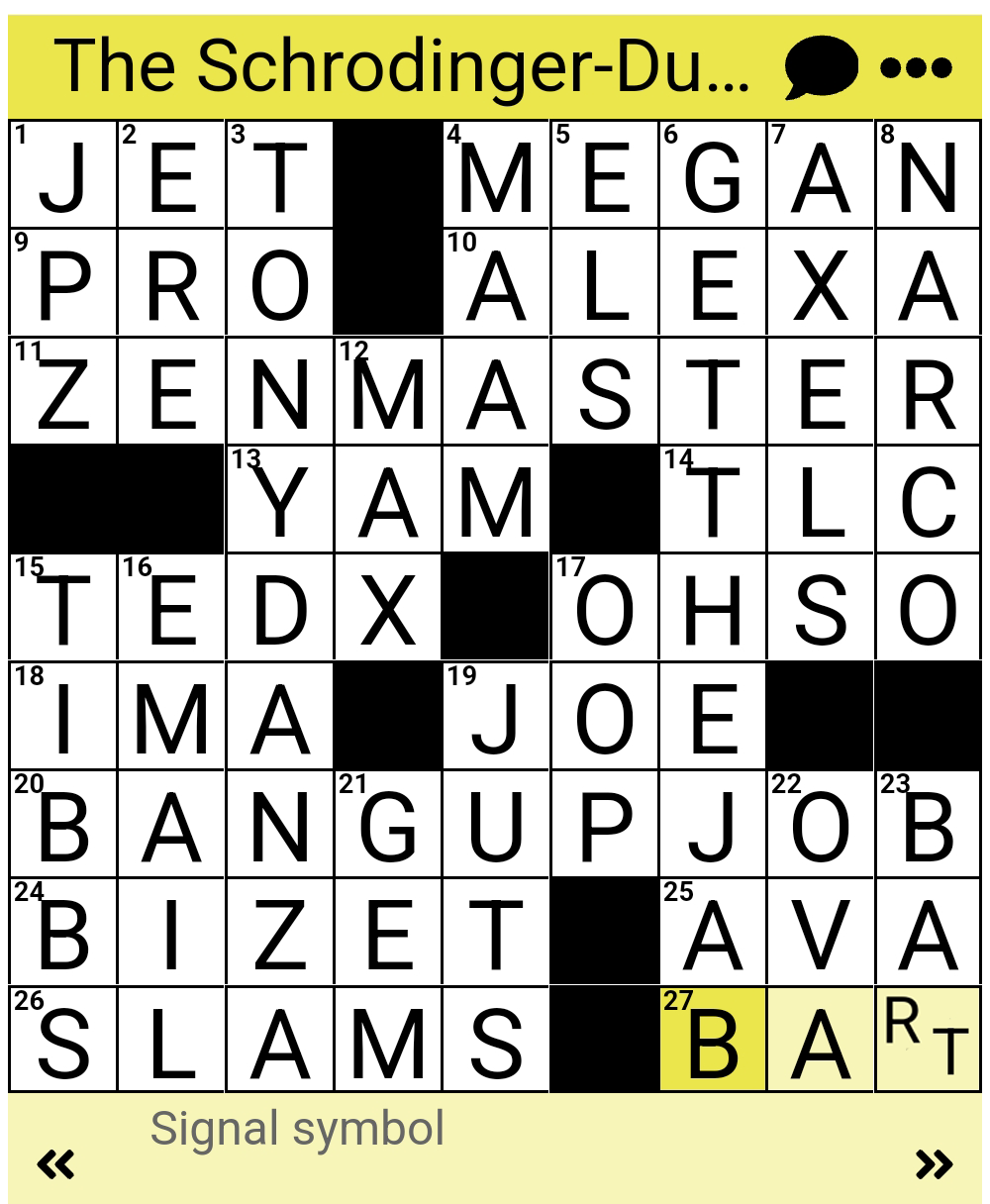Wikipedia’s Puzzle page includes this received wisdom:
“In a puzzle, the solver is expected to put pieces together (or take them apart) in a logical way, in order to arrive at the correct or fun solution of the puzzle.”
Focus on that “the.” A puzzle has one solution, whether correct (as in “BIDEN” for “President #46”) or just fun (as in your typical goofy theme entry). It has one solution.
Except, of course, when it doesn’t.
In the Schrödinger crossword (also called a quantum crossword or variable crossword), key tiles admit more than one answer. The first widely published Schrödinger crossword reached the New York Times in 1988, the creation of former chemist and Word Ways contributor Ralph G. Beaman. In it, he plays with variants like PEEPED and PEERED (cluing both as “Spied”), SLICED HAMS and SPICED HAMS, ENSURE and INSURE, and ROASTS and TOASTS.
Since any of the nine highlighted squares could be one of two letters, this puzzle has 512 possible answers!
Beaman worked even more variants into the clues. The word ACHING, for instance, was clued as “S(p/t)rain result,” indicating that either a muscle sprain or a muscle strain would explain the ache.
Two election cycles later, educator and later Word Ways editor Jeremiah Farrell gave the NYT its most famous Schrödinger, and arguably its most famous crossword.
The center two entries were clued as “Lead story in tomorrow’s newspaper(!)” But either BOB DOLE ELECTED or CLINTON ELECTED could match the crossing answers. BAT/CAT was clued as “Black Halloween animal,” LUI/OUI was “French 101 word,” et cetera. The specific “Schrödinger squares” were (B/C), (O/L), (B/I), (D/N), (O/T), (L/O), and (E/N).
Unlike the prior puzzle, this one has only two possible solutions. Mixing and matching just gets you stuff like BLIN OLE ELECTED, which isn’t anything.
Farrell constructed other, similar Schrödingers, including an unpublished one for REAGAN/CARTER in 1980—eight years before Beaman’s!—and one in Word Ways for BIDEN/TRUMP in 2020. That’s an astonishing 40-year history of a niche idea. Sad to say, I can’t imagine the NYT getting anywhere near such a puzzle in the politically fraught 2020s. Even 1996’s resulted in a lot of irate phone calls, many from people who didn’t see there could be two solutions and thought the crossword was “calling” the election early.
Schrödingers have only popped up now and again in the NYT but often make a splash when they do. Ben Tausig’s GENDER FLUID puzzle featured four variable squares that could be M or F, and Stephen McCarthy’s cheeky “Sci-Fi Showdown” clued STAR WARS/STAR TREK as “The better of two major sci-fi film franchises?” Both got a lot of positive press.
Outside the Grey Lady, Schrödingers can be a worthy challenge for ambitious constructors. Pete Muller and Mack Meller did one with ten variable squares honoring CAT STEVENS’ name change to YUSUF ISLAM.
More recent puzzles have played with or subverted Schrödinger conventions. Frisco17’s “Schrodinger-Dupe Paradox” has only one variable square, an (R/T). The across clue is “Signal symbol,” while the down clue is “___ mitzvah.” The answer to both clues is BAR/BAT…but if you fill in BAR as the across answer, the down answer also becomes BAR, violating normal-sized puzzles’ rule against duplication.
Only if the answer exists in perpetual uncertainty can this “dupe” be avoided. It must be like Schrödinger’s cat, theoretically both alive and dead!
I knew I’d have to do something big to honor this particular puzzling tradition with the V. But before going big, I’d have to learn how to create such a curious cat at all!
To be continued.





